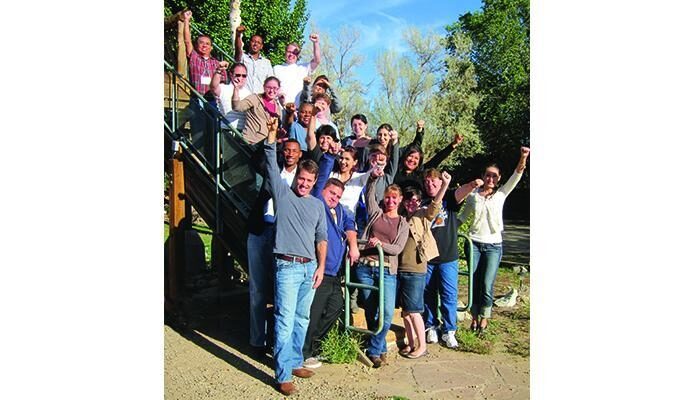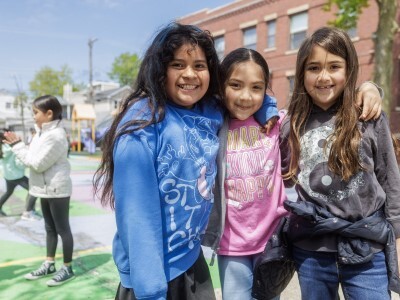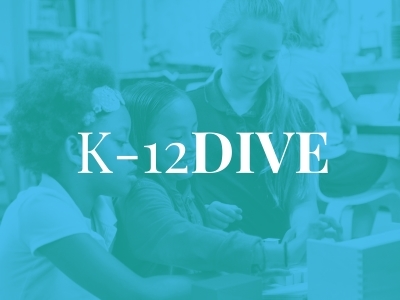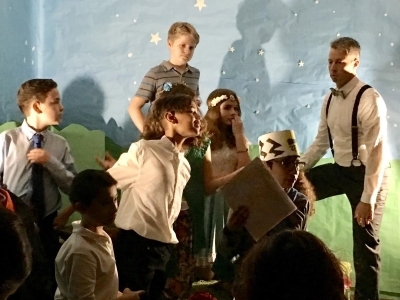A quest to understand America’s math problem
Topics

Today’s learners face an uncertain present and a rapidly changing future that demand far different skills and knowledge than were needed in the 20th century. We also know so much more about enabling deep, powerful learning than we ever did before. Our collective future depends on how well young people prepare for the challenges and opportunities of 21st-century life.
Ko’s Journey creator Scott Laidlaw of Imagine Education describes how a quest to teach math to middle schoolers turned into a bigger quest to understanding how so many classrooms do it wrong.
As a middle school math teacher, I never expected to find myself launching a game-based curriculum company, much less create a documentary film. But what I saw was that my students’ natural curiosity to learn and explore the world around them was fading away, buried beneath towering textbooks, stressful standards and tedious tests. And if this was happening within the innovative Expeditionary Learning school environment I taught it in, it was starkly clear that it was happening in schools everywhere—with serious consequences.
My late mentor, Art Combs, summed it up so perfectly during one of my doctoral seminars that I mull over his words every day: “The biggest problem in education is the giving of answers to questions that have not yet been asked.”
In a mutual leap of faith, Jennifer Lightwood and I founded Imagine Education. We transformed Ko, one of several immersive games I created for my classroom, into Ko’s Journey, an online game that set out to be different by integrating the math problems students would encounter directly into the context of the narrative story, putting math that held meaning and purpose in front of students. But to truly make the company viable, we needed support.
That opportunity came when we won a NGLC Wave II challenge grant. We set to work on our lengthy list of milestones, adding a transfer-of-learning “bridge curriculum” to Ko’s and setting up a 10-school pilot project and research study. One of those many milestones we’d set forth noted that we would document the pilot project on video, then create a short, promotional documentary about using Ko’s Journey in the classroom. Yes, that had been the plan.
Yet it became clear, as we detailed out how we would explain the powerful theories driving the Ko’s Journey learning experience there was a bigger story to be told. From the power of offering students an immersive, authentic environment, where it is safe to “try, try and try again”; to presenting math problems that hold meaning and relevance, rather than offering them up as an annoying, unrelated obstacles that must be overcome; to the importance of narrowing our lens to focus on a handful of core, key, critical math concepts, as espoused and emphasized in the Common Core State Standards.
This was a story that went far beyond why Ko’s Journey was a functional tool for fostering deeper learning. It was the story that you’d tell in a full-length, unbiased documentary film about math education. It was a story that we felt needed to be shared with parents, teachers, students, curriculum specialists and educational advocates. It’s a story that relates to anyone who ever failed a math course, and felt an intense sense of burning frustration. And it holds just as much relevance for those who aced a math course, only to still feel that they did not really understand the actual concepts and deeper purpose behind the exercises.
So, that’s the story we told in The Biggest Story Problem: Why America’s Students are Failing at Math. A story that is close to our hearts, because of what we see in the classroom, afterschool programs and over the dinner table at home. But creating a thought-provoking documentary film about math education isn’t the easiest route to take.
Most noticeable, is the fact that much of the classroom footage used in the film depicts students using Ko’s Journey. The short explanation is that’s the footage we had. But, and this is a much more critical point to make: it’s also that way because it was incredibly challenging to find examples of curriculums and exercises that align with the theories espoused in the film in-use in a typical American classroom. We ended up flying to Finland, and filming classrooms, teachers and administrators there.
Another tremendous challenge we encountered was how to tell a story that dissects a seriously depressing problem: we are teaching math in a way that sets up most students up for failure. Yet, we decided we weren’t going to tell it at all if we couldn’t approach it from a perspective of opportunities for hope and change, not doom and gloom. We didn’t create the film to blame teachers, shame schools or rally for or against governing entities. We created it to inspire and support transformational change.
In short, we simply decided to do whatever we could to preserve and tell the story, that for each of us involved, simply had to be told. While completing each and everyone of those other NGLC grant milestones, continuing to improve, and promote, Ko’s Journey; and seeking out new grant support to develop additional new games and programs.
As we reach the end of the Wave II cycle, we are incredibly proud of the work we’ve completed, and the route we’ve taken, as we present The Biggest Story Problem. Not just to our friends and funders. But to you: the educator, the thinker, the advocate, the agent of change.
Watch the trailer at www.thebiggesstoryproblem.com and if you like what you see tell your friends. Tell an educator in your community by pledging $25 to our sponsor a school campaign, and we’ll send a copy of the DVD to a school of your choice. Pledge $40 and you’ll get a copy for yourself too.
Then tell us what you think, what you are inspired by, and what changes you want to achieve.




